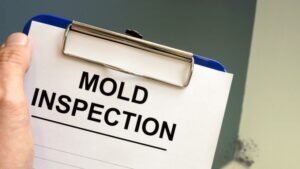
Are you concerned about mold growth in your commercial building? If you’re looking for a reliable method to keep mold at bay and protect the health of building occupants, consider upper air UV light disinfection. It is a safe and effective way to kill mold spores in the air.
Today, we will explain how UV disinfection works to help reduce or eliminate airborne mold spores within a space. This disinfection method has been used for decades in areas like healthcare and wastewater treatment settings. Now, these types of disinfection systems are available to all types of businesses to help target airborne germs and mold.
Become Farlite protected today – get in touch now to request pricing customized to your building.
Mold Spores Can Affect Health
Mold spores can have a detrimental effect on human health, causing allergic reactions, respiratory issues, and even neurological symptoms. Ongoing exposure to mold can increase a person’s sensitivity to it, causing increasingly severe reactions.
Exposure to mold spores may cause the following symptoms:
- Headache
- Runny nose
- Sneezing
- Watery eyes
- Itching
- Coughing
- Wheezing or difficulty breathing
- Fatigue
The only way to eliminate mold spores is through effective remediation and prevention. You should always address any mold issues promptly to ensure a safe and healthy environment.
How UV Light Disinfection Works
UVC light, which is the type used in indoor disinfection, has a very short wavelength and packs a serious punch. It is proven to kill 99.9% of airborne germs, including viruses, bacteria, and fungi.
This type of light is on the same electromagnetic spectrum as sunlight. It is powerful enough to penetrate the cell walls of airborne microorganisms and damage their DNA. When a pathogen’s DNA, RNA, and outer coatings are damaged, they are unable to reproduce, and die off without spreading further.
Ultraviolet Disinfection Versus Other Disinfectants
Not only is upper air UV light disinfection highly effective, but it is also environmentally friendly and non-toxic. It can provide continuous indoor air disinfection without the use of harsh chemicals. Chemicals can give off fumes or leave residues that reduce indoor air quality and may impact the health of people in the building.
In addition, this traditional disinfecting with chemicals requires extra labor. Businesses have to assign employees or hire an external contractor to clean surfaces and apply disinfectants. Even if done regularly and properly, this type of disinfection doesn’t affect airborne mold spores, which would continue to move throughout the space unhindered.
Some air filters can help capture mold spores as air cycles through. However, if the mold spores aren’t destroyed, they can continue to reproduce and spread. This method may also be costly as it requires continuous cleaning or replacement of contaminated air filters. In contrast, an automated UV air disinfection system works continuously without demanding maintenance requirements.
UV Light Disinfection Solutions from Farlite
Maintaining a clean and safe work environment is crucial for any business. We offer the perfect solution with our innovative UVPhasor technology. Plus, our technology is low-maintenance and easy to install, making it a convenient choice for any facility.
With Farlite Systems, you can rest assured that your workspace is clean and safe for you and your employees. Invest in a UV light disinfection system for your space and take an important step towards a healthier environment.
